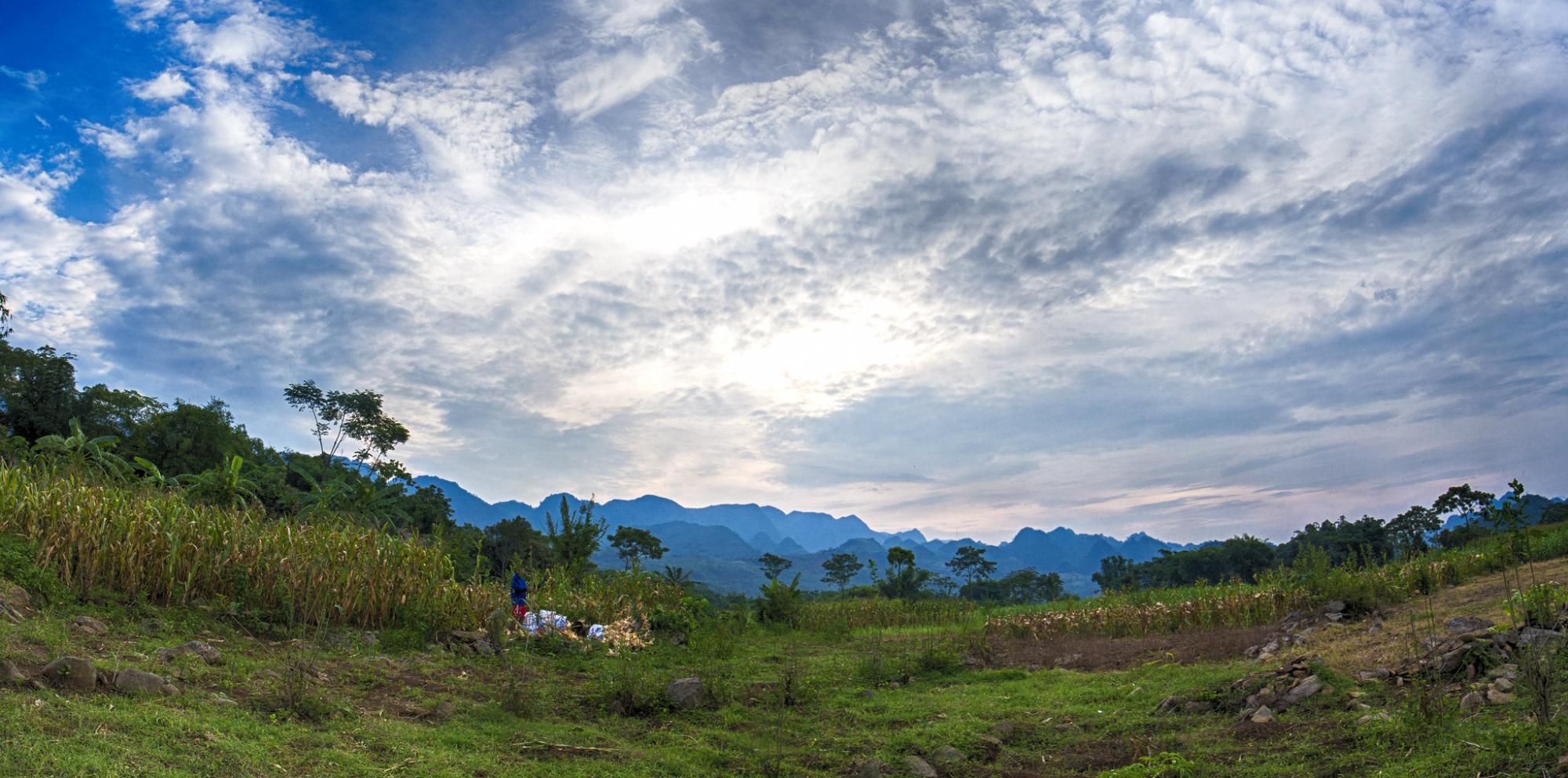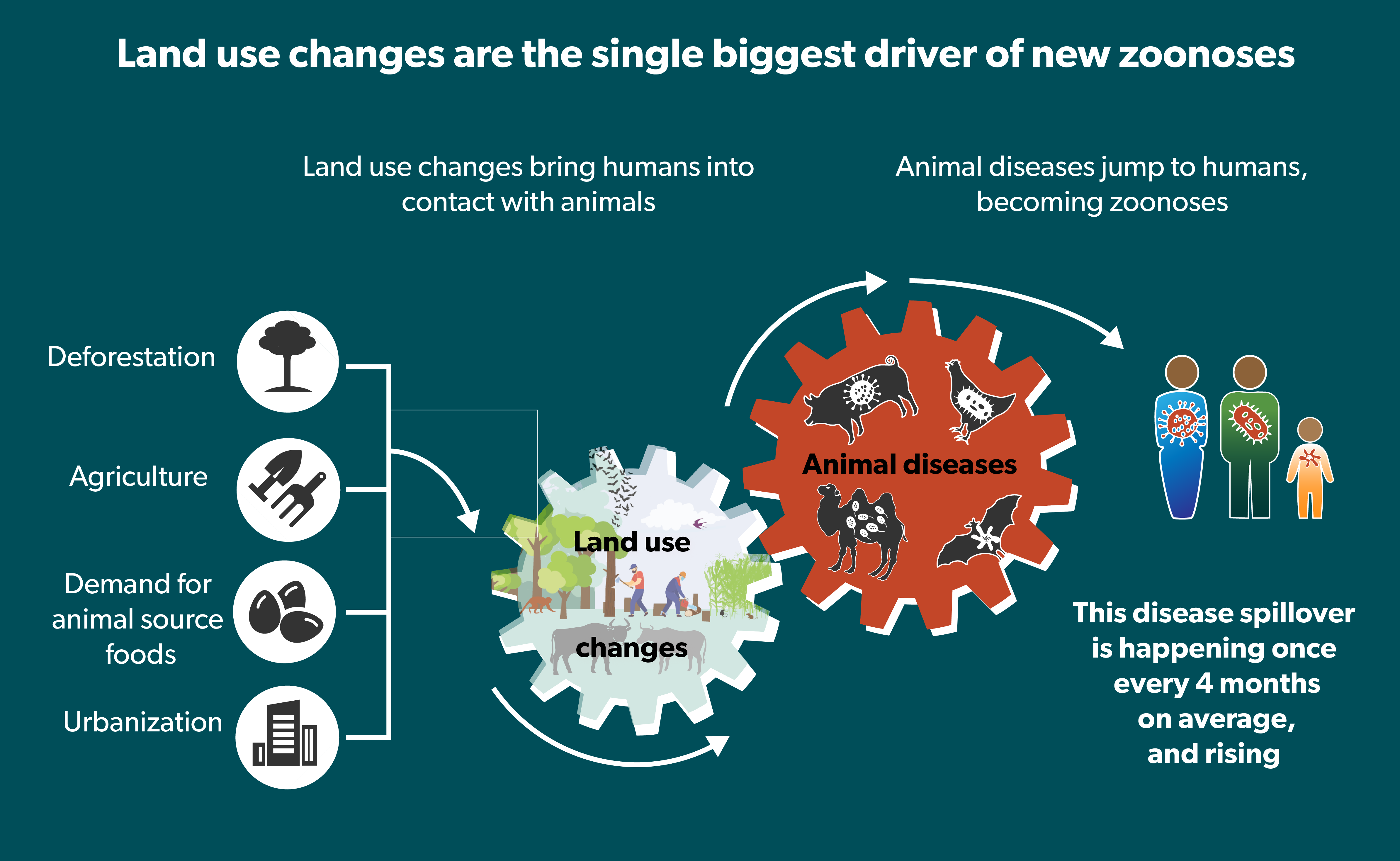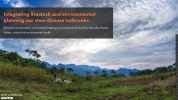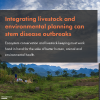
Integrating livestock and environmental planning can stem disease outbreaks
Ecosystem conservation and livestock-keeping must work hand in hand for the sake of better human, animal and environmental health.
Core message
It makes a difference when investments and policies consider ecosystem conservation and livestock-keeping must work hand in hand for the sake of better human, animal and environmental health.
Evidence shows that new infectious diseases that threaten people’s lives and livelihoods can emerge as a result of a complex interplay between people, livestock, wildlife and the environment.
Rapid changes in land use across the world, in particular the clearance of forests and wilderness areas to make way for agricultural production, have led to an increasing incidence of disease jumping species from wild or domestic animals to people.
Such disease spillovers now occur on average once every four months.

Safer, more sustainable pathways can help people, nature and livestock co-exist in harmony.
Prevention and control programmes for infectious diseases spread by animals (zoonoses) often focus on animal and human health risks. While the environment is often left behind, we know that changing land use is the single-biggest driver of new and emerging zoonotic diseases.
Key disease outbreaks of the past 25 years and their human toll
- 1997 – first H5N1 avian influenza (‘bird flu’) outbreak – six deaths
- 2002-4, first SARS (Severe Acute Respiratory Syndrome) outbreak – 774 deaths
- 2009-2010, first H1N1 swine influenza (‘swine flu’) outbreak – 151,700-575,400 deaths
- 2012-2020 (ongoing), first MERS (Middle East Respiratory Syndrome) outbreak and sporadic outbreaks since – 881 deaths
- 2014-2016, first major Ebola outbreak – 11,325 deaths
- 2019 (ongoing), COVID-19 pandemic – 1.3m+ and rising deaths
Action areas
Environmental pathways towards disease mitigation include:
1. Safeguarding ecosystems
Land-use change and disease emergence and spread are connected in complex ways we are still learning about. We know that land cleared of forest or other naturally occurring vegetation for agriculture affect biodiversity, can destabilise the natural dynamics of ecosystems, in particular by affecting the types and numbers of native wildlife species – factors known to affect the transmission of zoonotic disease. For example, the distribution of ticks and mosquitos, which spread disease, can be affected by land-use change, particularly that dependent on irrigation. Actions that look after nature, will look after livestock and people too.
2. Managing risks
Effectively managing the boundaries between nature and livestock can be good for both as well as for human health. For example, the potential for viruses and other pathogens in wildlife to spill over to people via livestock – and vice versa – increases as natural barriers between people and livestock and wildlife break down.
Good biosecurity, improved risk awareness and careful land-use planning can limit direct interactions of livestock with wildlife. Improved surveillance in wildlife and monitoring of potential vectors such as insects and ticks, helps to detect and manage risks.
3. Boosting livestock’s positive contributions to nature, and vice versa.
For instance, well-functioning rangelands sustain the availability of soil, water and nutrients for plants. They provide carbon and water storage, prevent soil erosion (and the associated menace of dust storms), and support other ecosystem services such as tourism. With good management, they can even help increase biodiversity.
4. Implementing joined-up and community-based surveillance
Community-based management of natural resources is widely recognised as an essential pre-requisite for sustainability and protection of the environment. Likewise, community participation and engagement in surveillance effectively ensures disease is detected at the point of emergence, saving time and resources in disease response.

